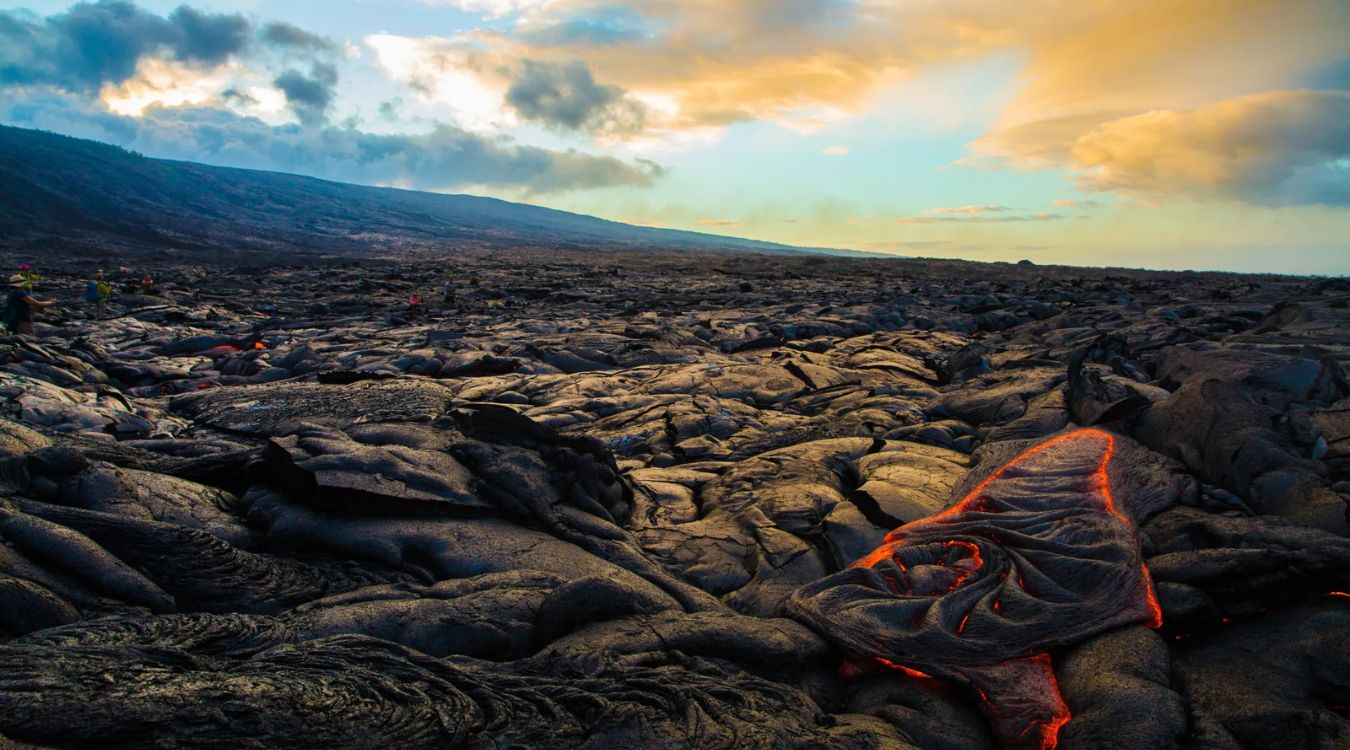Secrets Of Hawaii’s Primordial Lava Fields

Have you ever wondered what it feels like to walk on the moon? Visiting Hawaii's primordial lava fields might be the closest you can get without leaving Earth. These ancient landscapes, formed by volcanic activity, offer a unique glimpse into the island's fiery origins. Imagine walking across vast expanses of hardened lava, with jagged rocks and surreal formations stretching as far as the eye can see. The stark beauty of these fields is both otherworldly and mesmerizing. Whether you're an avid hiker or just someone who loves nature, exploring these lava fields will leave you in awe. Ready to step into a world that feels like another planet? Let's dive into the secrets of Hawaii's primordial lava fields.
Unveiling Hawaii's Primordial Lava Fields
Hawaii's lava fields are like stepping into another world. These ancient landscapes, formed by volcanic activity, offer a unique glimpse into the Earth's fiery past. Let's explore some of the most fascinating lava fields in Hawaii.
1. Kilauea Iki Crater
Kilauea Iki Crater, located in Hawaii Volcanoes National Park, is a must-see. This crater was the site of a dramatic eruption in 1959, leaving behind a vast lava lake.
- Hiking Trails: The Kilauea Iki Trail takes you down into the crater, where you can walk across the solidified lava lake.
- Thurston Lava Tube: Nearby, explore the Thurston Lava Tube, a tunnel formed by flowing lava.
2. Mauna Loa
Mauna Loa, one of the world's largest volcanoes, offers an expansive lava field. This massive shield volcano has erupted many times, creating a vast landscape of hardened lava.
- Mauna Loa Observatory: Visit the observatory for stunning views of the lava fields and learn about volcanic activity.
- Summit Hike: For the adventurous, hike to the summit for a panoramic view of the island and its lava fields.
3. Pu'u Loa Petroglyphs
Pu'u Loa, located in Hawaii Volcanoes National Park, is home to thousands of ancient petroglyphs carved into the lava rock. These carvings provide a glimpse into the lives of early Hawaiians.
- Petroglyph Trail: Walk the trail to see these fascinating carvings up close.
- Cultural Significance: Learn about the cultural and historical importance of the petroglyphs from interpretive signs along the trail.
4. Kalapana Lava Viewing Area
Kalapana, once a thriving village, was largely destroyed by lava flows in the 1990s. Today, it offers a unique opportunity to see active lava flows up close.
- Lava Viewing: Watch molten lava flow into the ocean, creating new land.
- Guided Tours: Join a guided tour for a safe and informative experience.
5. Chain of Craters Road
Chain of Craters Road in Hawaii Volcanoes National Park takes you on a journey through various lava fields. This scenic drive offers numerous stops to explore different types of lava formations.
- Scenic Overlooks: Stop at overlooks for breathtaking views of the lava fields and the ocean.
- Hiking Opportunities: Several trails along the road lead to interesting lava formations and craters.
6. Puna District
The Puna District on the Big Island is known for its dramatic lava landscapes. This area has been shaped by recent eruptions, creating a stark and beautiful terrain.
- Lava Tree State Monument: See the unique lava molds of trees at this state park.
- Kapoho Tide Pools: Explore the tide pools formed by lava flows, perfect for snorkeling.
7. Napau Crater
Napau Crater, located in Hawaii Volcanoes National Park, offers a more remote and less-visited lava field experience. This area provides a sense of solitude and untouched beauty.
- Napau Trail: Hike the trail to reach the crater and enjoy the serene landscape.
- Wildlife Spotting: Keep an eye out for native birds and other wildlife along the way.
8. Lava Flow 61g
Lava Flow 61g, part of the ongoing eruption of Kilauea, has created a dynamic and ever-changing landscape. This flow has been active since 2016, continuously adding new lava to the field.
- Viewing Points: Several vantage points offer views of the active flow.
- Photography: Capture stunning photos of the glowing lava, especially at dusk.
9. Keanakāko'i Crater
Keanakāko'i Crater, also in Hawaii Volcanoes National Park, is another fascinating lava field. This crater was formed by an explosive eruption, leaving behind a rugged landscape.
- Crater Rim Trail: Walk the trail around the rim for excellent views of the crater and surrounding lava fields.
- Historical Significance: Learn about the crater's history and its impact on the local environment.
10. Halema'uma'u Crater
Halema'uma'u Crater, located within the Kilauea Caldera, is one of the most active volcanic sites in Hawaii. This crater has been the site of numerous eruptions, creating a constantly evolving lava field.
- Jaggar Museum: Visit the museum for educational exhibits and a prime viewing spot for the crater.
- Nighttime Glow: Witness the eerie glow of the lava lake at night, a truly unforgettable sight.
Embracing Hawaii's Ancient Lava Fields
Hawaii's primordial lava fields offer a unique glimpse into the island's volcanic past. These landscapes, shaped by ancient eruptions, reveal the raw power of nature. Exploring these areas, you can witness the stark beauty of hardened lava flows, craters, and volcanic rock formations.
Visiting these sites isn't just about seeing geological wonders. It's also about understanding the cultural significance they hold for native Hawaiians. Many lava fields are considered sacred, adding a layer of reverence to your adventure.
Whether you're hiking through the lava fields of the Big Island or marveling at the volcanic landscapes of Maui, these experiences leave a lasting impression. They remind us of the dynamic forces that continue to shape our planet. So, pack your hiking boots, respect the land, and get ready to explore one of Hawaii's most awe-inspiring natural features.

